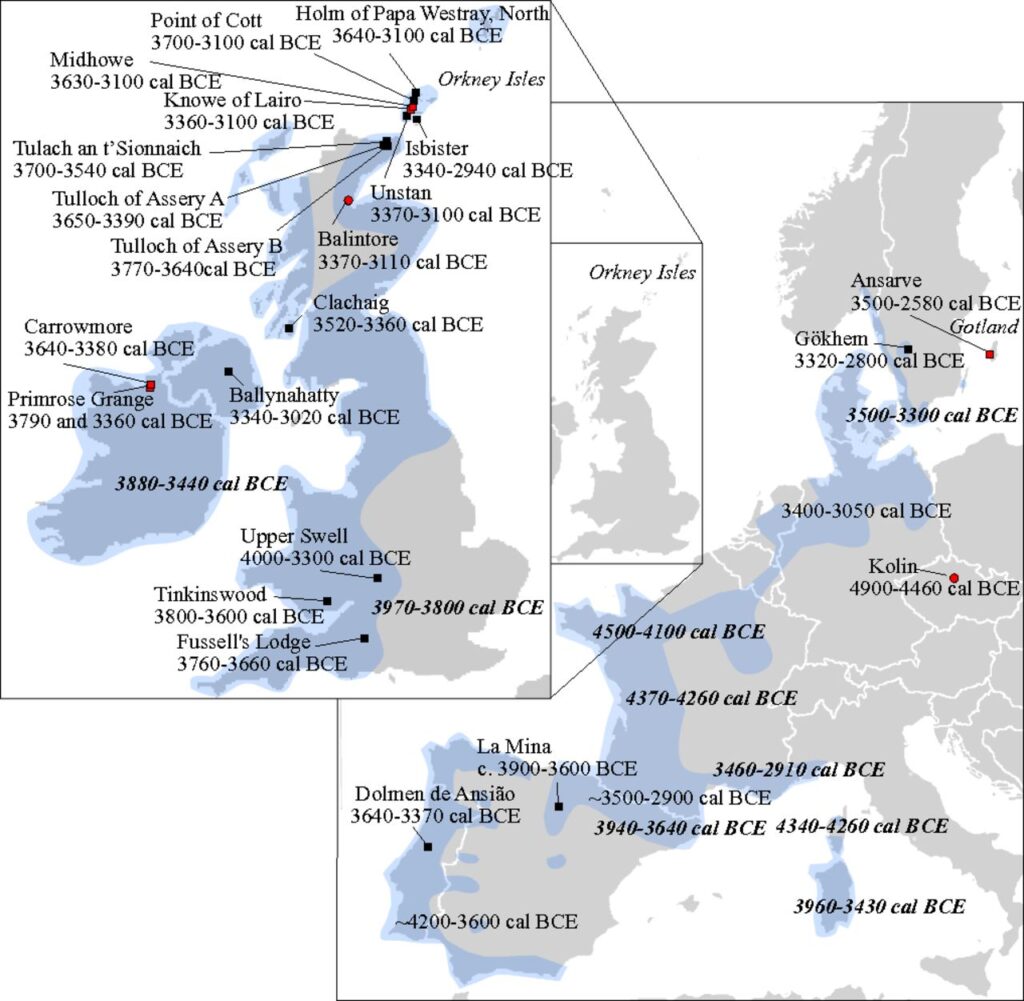A new phenomenon of constructing distinctive funerary monuments, collectively known as megalithic tombs, emerged around 4500 BCE along the Atlantic façade. The megalithic phenomenon has attracted interest and speculation since medieval times. In particular, the origin, dispersal dynamics, and the role of these constructions within the societies that built them have been debated. We generate genome sequence data from 24 individuals buried in five megaliths and investigate the population history and social dynamics of the groups that buried their dead in megalithic monuments across northwestern Europe in the fourth millennium BCE. Our results show kin relations among the buried individuals and an overrepresentation of males, suggesting that at least some of these funerary monuments were used by patrilineal societies (Sánchez-Quinto et al. 2019)

Abstract
Paleogenomic and archaeological studies show that Neolithic lifeways spread from the Fertile Crescent into Europe around 9000 BCE, reaching northwestern Europe by 4000 BCE. Starting around 4500 BCE, a new phenomenon of constructing megalithic monuments, particularly for funerary practices, emerged along the Atlantic façade. While it has been suggested that the emergence of megaliths was associated with the territories of farming communities, the origin and social structure of the groups that erected them has remained largely unknown. We generated genome sequence data from human remains, corresponding to 24 individuals from five megalithic burial sites, encompassing the widespread tradition of megalithic construction in northern and western Europe, and analyzed our results in relation to the existing European paleogenomic data. The various individuals buried in megaliths show genetic affinities with local farming groups within their different chronological contexts. Individuals buried in megaliths display (past) admixture with local hunter-gatherers, similar to that seen in other Neolithic individuals in Europe. In relation to the tomb populations, we find significantly more males than females buried in the megaliths of the British Isles. The genetic data show close kin relationships among the individuals buried within the megaliths, and for the Irish megaliths, we found a kin relation between individuals buried in different megaliths. We also see paternal continuity through time, including the same Y-chromosome haplotypes reoccurring. These observations suggest that the investigated funerary monuments were associated with patrilineal kindred groups. Our genomic investigation provides insight into the people associated with this long-standing megalith funerary tradition, including their social dynamics.
The study on Megalithic tombs was reported by Newsweek: These Megalithic Tombs Contain the Remains of More Than 10 Generations of Stone Age Europeans, DNA Analysis Reveals (in English).

